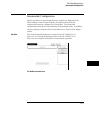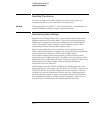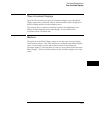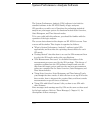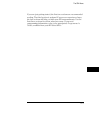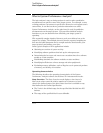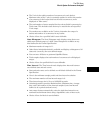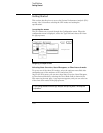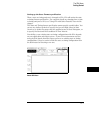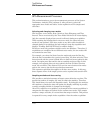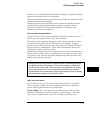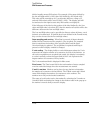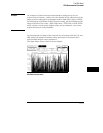
What is System Performance Analysis?
The logic analyzer’s state or timing analyzer is used to make quantitative
measurements on specific events in the target system. For example, a state
or timing analyzer can measure a specific time interval on a microprocessor’s
control lines, or can find out how a particular subroutine was called.
System Performance Analysis, on the other hand, is used for qualitative
measurements on the target system. SPA provides statistical analysis
functions so you can determine how efficiently your target system is
operating.
SPA repeatedly samples signals of interest, such as an address bus or the
output of a counter. The multiple data sets from the repeated sampling are
then used to build histograms and to compile statistics that describe your
target system’s performance over time.
Some typical examples of SPA applications include
•
Obtaining an overview of system activity.
•
Identifying software problems that lock up the microprocessor.
•
Determining the best-case and worst-case execution times for a software
module or a state machine.
•
Establishing standards for software modules or state machines.
•
Identifying inefficient use of mass storage and other peripherals.
•
Evaluating memory utilization, such as illegal access in protected portions
of memory, and locality of execution.
Operating characteristics
The following describes the operating characteristics of the System
Performance Analysis software for the three SPA measurement modes.
State Overview
The State Overview mode displays a bar chart of a
label’s state value versus the relative number of occurrences of each
value in the defined range of the label. State Overview is available on any
label defined in the Format Specification.
•
The X axis is the defined range for the specified label divided into 256
buckets.
•
The range of the specified label is user-definable.
The SPA Menu
What is System Performance Analysis?
11-4




